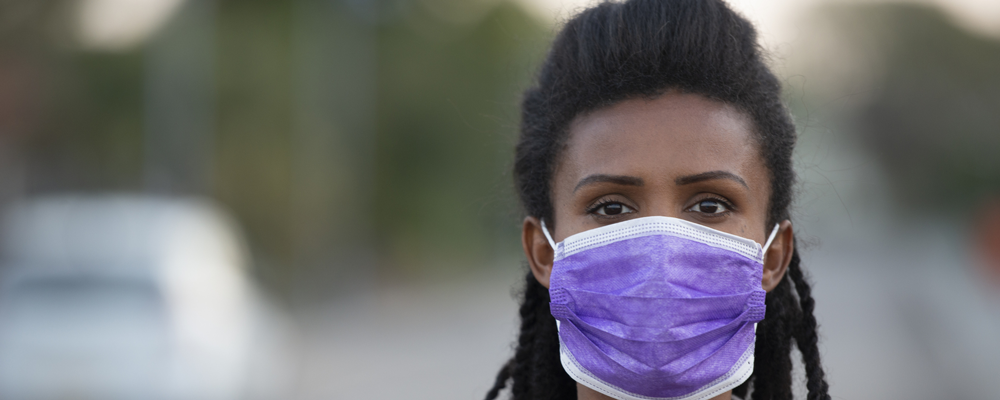
by T-Kea Blackman | May 21, 2021 | Headline News |
Video courtesy of CBN News
Republished in honor of Mental Health Awareness Month.
When you see a man walking down the street talking to himself, what is your first thought? Most likely it’s, “He is crazy!” What about the lady at the bus stop yelling strange phases? You immediately become guarded and move as far away from her as possible. I know you’ve done it. We all have.
We are so quick to judge others on the surface level without taking the time to think that maybe God is placing us in a situation for a reason. Maybe it is a test and in order to pass, you must show love and compassion for something or someone that you do not understand.
Perhaps the man or woman you judge are suffering from a mental illness. However, do not be deceived by appearances, because mental illness does not have “a look.”
More Than What Meets The Eye
When most people look at me, they see a successful, 20-something-year-old woman who is giving of herself and her time. In the past, they would only see a bubbly, out-going, praying and saved young lady who is grounded in her faith. When outsiders look at me, they often see someone with two degrees from two of America’s most prestigious institutions, an entrepreneur who prides herself on inspiring others to live life on purpose, and simply lets her light shine despite all obstacles.
However, what so many do not know is that there was a time when I was dying on the inside. On a beautiful summer morning, at the tender age of 25, I suddenly felt sick. It was not the kind of sick where one is coughing with a fever and chills. I felt as if there were a ton of bricks on top of my body and I could not move my feet from the bed to the floor.
Then, there were times when I was unable to stop my mind from racing. I had a hard time concentrating on simple tasks and making decisions. My right leg would shake uncontrollably and I would get so overwhelmed by my mind.
It was in those moments when I inspired to begin researching depression and anxiety. I had the following thoughts as I read the symptoms: “This sounds like me. But, if I’m diagnosed with depression and anxiety, does this mean I am no longer grounded in my faith? Would I walk around claiming something that the Christians deemed as not being a “real” disease? Am I speaking this illness into existence?”
Who Can I Turn To?
According to the National Association of Mental Illness (NAMI), Depression is a chemical imbalance in the brain and mood disorder that causes persistent feelings of sadness, hopelessness, guilt and one cannot “just snap out of it.”
NAMI also describes anxiety as chronic and exaggerated worrying about everyday life. This can consume hours each day, making it hard to concentrate or finish routine daily tasks.
As the months passed, my symptoms became progressively worse and I became so numb to life. I slowly began to open up to my church family and some of the responses I received were so hurtful. I received a variety of suggestions on everything from speaking in tongues for 20 minutes to avoiding medication because it would make my condition worse.
As a result, I did not know what to do. I felt lost and alone, because a community that I turned to first in my time of trial and tribulation did not understand me. I was so deep in my depression that praying and reading my Bible was too difficult of a task to complete.
As time went on, I eventually went to the doctor and guess what? I was right. I went undiagnosed for over 10 years. Imagine the consequences if a person with cancer, AIDS/HIV or diabetes went undiagnosed.
The Breaking Point
I eventually found myself in the hospital after a friend called 911 to notify them of my suicide attempt. I was so removed from life that when the doctor asked me the day of the week and date, I could not tell him.
Honestly, I can tell you a number of reasons why I tried to commit suicide. Some of them were external factors, such as finances. Some of it was burn-out. Some of it was unresolved childhood issues and genetics.
However, after learning my family medical history, I discovered that several members of my family battled mental illness during their lifetime. Both of my parents battled mental illness, and my grandfather informed me about the time he tried to commit suicide at the age of 14. My uncle was admitted to the hospital due to schizophrenia.
A Bright Future
Over time, I’ve come to the conclusion that I have no reason to feel ashamed or embarrassed. God has placed amazing people in my life from family members, friends who are simply extended family, doctors, therapists, and medication.
While my goal is not to rely on medication for the rest of my life, I am grateful that I found something that works while I work through recovery. Looking back to where I was about two years ago, I would have never saw myself living life with depression and anxiety.
I believe in the power of prayer and God’s word. As the scripture states in James 2:17, “Faith by itself isn’t enough. Unless it produces good deeds, it is dead and useless.” This leads me to believe that no matter how difficult the situation is, I will have to work towards healing and recovery even though I have a strong foundation and faith.
Do you have words of encouragement for someone who is battling mental illness? Share your thoughts below.
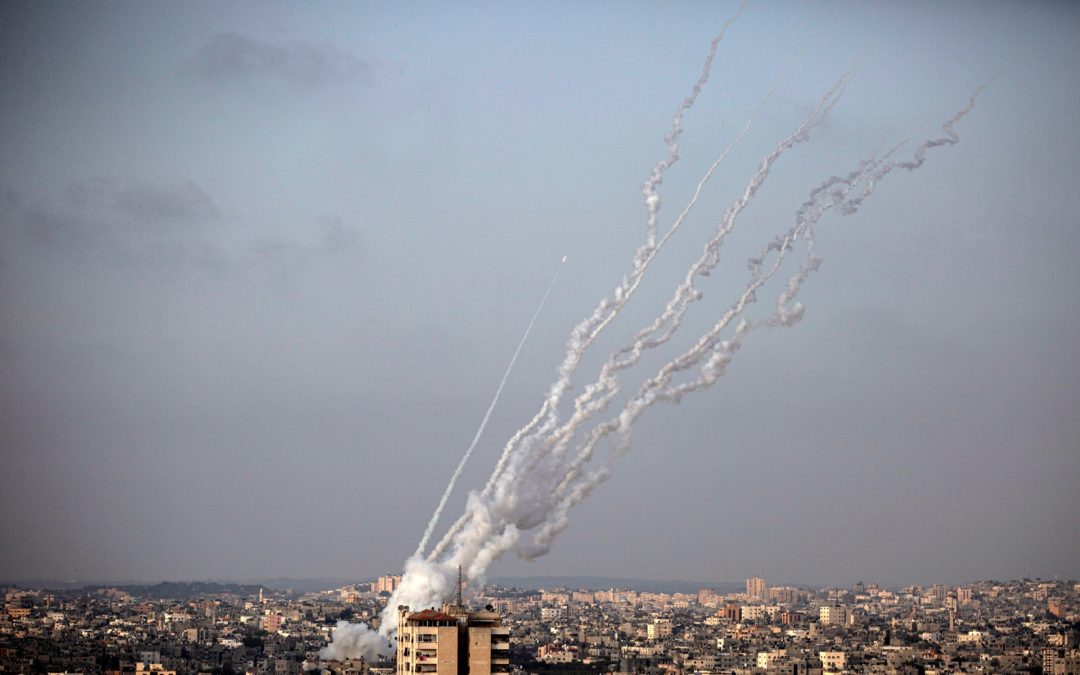
by Yonat Shimron, RNS | May 20, 2021 | Headline News |
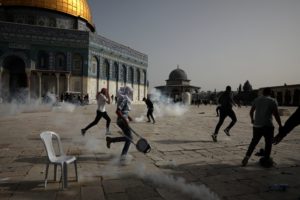
Originally published May 12, 2021
(RNS) — Violence between Gaza and Israel intensified this week to levels not seen for years, with Hamas shooting hundreds of rockets toward the Tel Aviv metropolitan area and Israel retaliating with heavy strikes on Hamas targets in the Gaza Strip.
The buildup to the current conflagration — some are already calling it a new “intifada” or “uprising” — began several weeks ago in a Jerusalem neighborhood near the Old City, close to the Al-Aqsa Mosque, one of Islam’s holiest sites for more than 1,200 years.
While Muslims pray at Al-Aqsa year-round, the mosque attracts even more worshippers during Ramadan. Wednesday (May 12) marked the end of Ramadan and the start of Eid al-Fitr, a joyous time for millions of Muslims concluding a monthlong fast.
There’s no doubt that the most extreme Jewish nationalists would like Israel to recapture the Al-Aqsa Mosque because they say it sits on top of the ruins of the ancient Jewish Temple, the only remainder of which is the Western Wall.
But except for the setting of the conflict, faith is only tangentially related to the violence. Here’s a quick explainer on the conflict of the past few days, and what, if any, role religion plays.
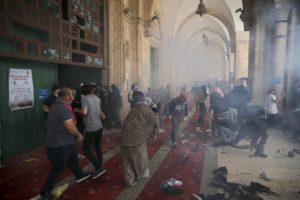
Why did Israeli police raid the Al-Aqsa Mosque to begin with?
The Israeli government said the police responded after the Palestinians started throwing stones at them. Palestinians say the fighting really began when police entered the mosque compound on May 10 and started firing rubber-tipped bullets and stun grenades. More than 330 Palestinians were wounded. Israel said 21 of its officers were, too.
But the underlying tensions may have more to do with a set of clashes in the larger east Jerusalem area, which was captured by Israel in the 1967 Six-Day War and is home to about 350,000 Palestinians.
For weeks prior to the mosque violence, Palestinians had been protesting the threatened eviction of Palestinian families from the Sheikh Jarrah neighborhood of east Jerusalem. At night they would clash with police and far-right Jewish settlers.
Those clashes are in turn part of a long legal battle over who owns the property. Some Palestinians were relocated to Sheikh Jarrah by the Jordanian government in the 1950s after fleeing their homes during Israel’s War of Independence in 1948.
On May 10, the Israeli Supreme Court was set to decide whether to uphold the eviction of six families from the Sheikh Jarrah neighborhood in favor of Jewish settlers. The court has since postponed the ruling.
So this is a land dispute?
On a large scale, yes. In Sheikh Jarrah, in particular, the dispute originates in the 19th century, when Jews living abroad began returning to what is now Israel and buying properties from Palestinians who lived there. The Jordanians took over the land between 1948 and 1967. Israelis are now claiming it’s theirs again.
The dispute in Sheikh Jarrah takes on political overtones because the neighborhood is part of east Jerusalem, which Palestinians want name as the capital of a future Palestinian state encompassing the West Bank and Gaza. Many Israelis, regardless of their views about a Palestinian state, believe Jerusalem must remain “a Jewish capital for the Jewish people,” and under Israeli control.
What’s Hamas got to do with it?
The clashes between Israel and Palestinians in Jerusalem have united Palestinians far and wide, as have the larger disputes over their displacement and disenfranchisement by Israel. Hamas, the Islamist militant group that controls the Gaza Strip, located about 60 miles south of Jerusalem, sees itself as a defender of Palestinians.

Hamas is at root an Islamic organization born from members of the Muslim Brotherhood, and so it also cares deeply about the Al-Asqa Mosque, which Muslims call the Noble Sanctuary.
On May 12, Israel assassinated several Hamas commanders in retaliation for the barrage of rockets on Tel Aviv, Ashkelon and Israel’s main international airport in the city of Lod.
What role does Judaism or Islam play in this?
At heart, the Israeli-Palestinian conflict is a dispute over land. But religion is often the proxy for those disputes, pitting two different ethnicities and religions. Little wonder those tensions tend to flare around religious holidays, both Jewish and Muslim.
But Hamas’ main goal is not war with Judaism, but rather with Israel, which is occupying land it believes is inherently Palestinian.
As Hamas has become more emboldened over the years, so too, have Jewish nationalists. On Monday, May 10, which was Jerusalem Day, a national holiday celebrating the unification of Jerusalem, Jewish nationalists marched through the Old City of Jerusalem, including the Muslim Quarter, in a display that provoked and angered many Palestinians.
As often happens, the exclusive claims to parts of the holy city often turn deadly.
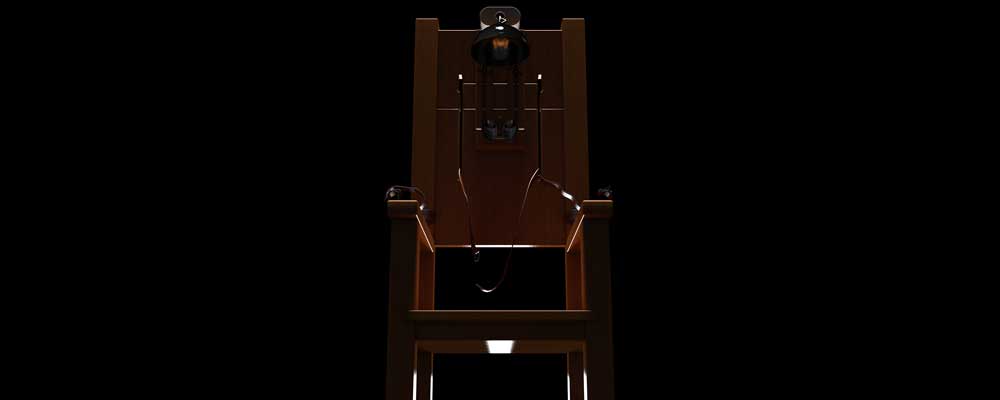
by Shane Claiborne, RNS | May 19, 2021 | Commentary, Headline News, Social Justice |
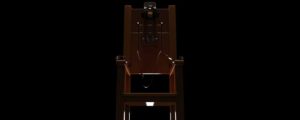
(RNS) — On Wednesday (May 19), Quintin Jones is scheduled to be executed in Texas. It is the first state execution of 2021, and the first time a state has executed anyone in nine months.
It’s been 40 years since we’ve gone this long without a state execution.
Quintin is not the only person currently scheduled to be executed in Texas this year. So are four other people. Typically, Texas accounts for about half of the executions in the U.S., but this year it could account for all, or almost all, of them. Five of the six executions planned for 2021 are in this one state. Until just this year, Texas has had a law called the “law of parties” that allowed people not directly responsible for a murder to be executed for the crime, sort of guilt by association.
And, even now, Texas considers “future dangerousness” during sentencing, an idea that’s been debunked by most criminologists and experts because it is impossible to predict who someone will become. In some cases, like Duane Buck, court “experts” have even suggested race can be a determinant of future dangerousness … not even subtly suggesting black people are more likely to be violent than white people. Perhaps one of the many reasons African Americans account for a disproportionate number of our executions and of the death row population.
In contrast to other Texas cases like Rodney Reed, where it is quite clear there was a wrongful conviction, Quintin does not claim to be innocent of the crime for which he faces execution. He was 20 years old and addicted to drugs when he killed his great-aunt, Berthena Bryant, with a baseball bat. It is terrible, and he knows it. Early on, he too was convinced he deserved to die, and even attempted to take his own life. But over the past 22 years, Quintin’s story has taken an incredible, grace-filled turn.
His family, and the victim’s sister in particular, have seen the power of forgiveness, redemption and mercy. They are among the most vocal opponents to his execution. Every time they speak you can feel their authentic faith shine through the cracks of their pain. They have seen the changes in Quin’s life, the ways he has embraced his faith, tried to heal the wounds he inflicted, and the steps he’s taken to change his life.
Speaking of his faith, in a viral video produced by The New York Times, Quin quoted a passage from the Bible that says, “When I was a child, I spoke as a child, I understood as a child, I thought as a child: but when I became a man, I put away childish things” (1 Corinthians 13:11). Quin went on to say if he is executed, Texas will be executing the child he was, not the man he is now. He and tens of thousands of others are asking for Texas Gov. Greg Abbott to stop his execution.
Many of us who are asking for Quin’s life to be spared are Christians. And at the heart of our faith is the belief no one is beyond redemption. We are praying. We are calling the governor. We are hoping this is a moment Abbott can show the best of his faith tradition as a Catholic. Pope Francis has called for a worldwide abolition to the death penalty, and the Catholic catechism teaches that the death penalty has no place in modern society.
And yet one of the tragic realities in America is, up until now, the Bible Belt has been the death belt. In the very part of the country where Christians are most concentrated, and under the leadership of Christian governors like Abbott, the executions continue. Despite our claims to be pro-life, Christians have been the firm base of support for the death penalty. But this too is changing. Recent polls of millennial Christians (born after 1980) show overwhelming support for the abolition of the death penalty.
There are many things we are excited to see return to “normal” in our country as it begins to open back up after the massive death and sickness from COVID-19. Worship services. Going to coffee shops and concerts and on a date to the movies. Playgrounds and swimming pools. But resuming state executions is not something on that list.
State executions are not something most Americans want to see “return to normal” after the pandemic. Many of us would like to see the nine-month halt on state executions be “the new normal.” For the first time in my 45-year life, a majority of Americans are done with the death penalty.
Even though it is partially true that it took a pandemic with a massive death toll to slow down the machinery of death when it comes to capital punishment, there’s more going on. Let’s not forget that the Trump administration set a record number of federal executions during the same period state executions were hitting a record low (there were only seven state executions in 2020, the lowest number we’ve seen since the 1980s). After 17 years without a single federal execution, former President Donald Trump carried out 13 executions in the last seven months of his presidency. He executed people at a rate we haven’t seen since the 1800s, and he did it in the middle of the pandemic. When Trump left, federal executions stopped, and President Joe Biden has pledged not to carry out any more.
Meanwhile, a lot of states are recalibrating, trying to figure out if the death penalty has a future. State by state, the number of executions has been dropping nearly every year. So have new death sentences, which are the lowest they’ve been in a generation. Nearly every year, a new state abolishes the death penalty. Early this year, in March, Virginia made history, becoming the first formerly Confederate state to abolish the death penalty.
There is reason to hope the Supreme Court, even a conservative-leaning court, could deem the death penalty unconstitutional — not only because it is cruel, but because it is “unusual.” Executions are rare and arbitrary, and most of the country is ready to move on, along with the majority of the world, from executing people. A mere 2% of the counties in the U.S. generate the majority of executions. Right now, Texas is on the wrong side of life, and Texas is an outlier.
It is also noteworthy the states that continue to hold onto the death penalty are not only the states in the Bible Belt, but they are also the states of the former Confederacy. The states that held on to slavery the longest are the same states that continue to hold on to the death penalty. Where lynchings were happening 100 years ago is precisely where executions continue to happen today.
A generation from now we will look back on the death penalty like we look back at slavery — with shame and horror, with many of our grandchildren asking how Christians used the Bible to defend such a thing. So this is a time for courage. It does not take courage to say slavery was wrong generations after we abolished it. But it took courage to say slavery was wrong when many people thought it was acceptable, even God-ordained. This is a time for courage.
(Shane Claiborne is an activist, author and co-director of Red Letter Christians. The views expressed in this commentary do not necessarily represent those of Religion News Service.)
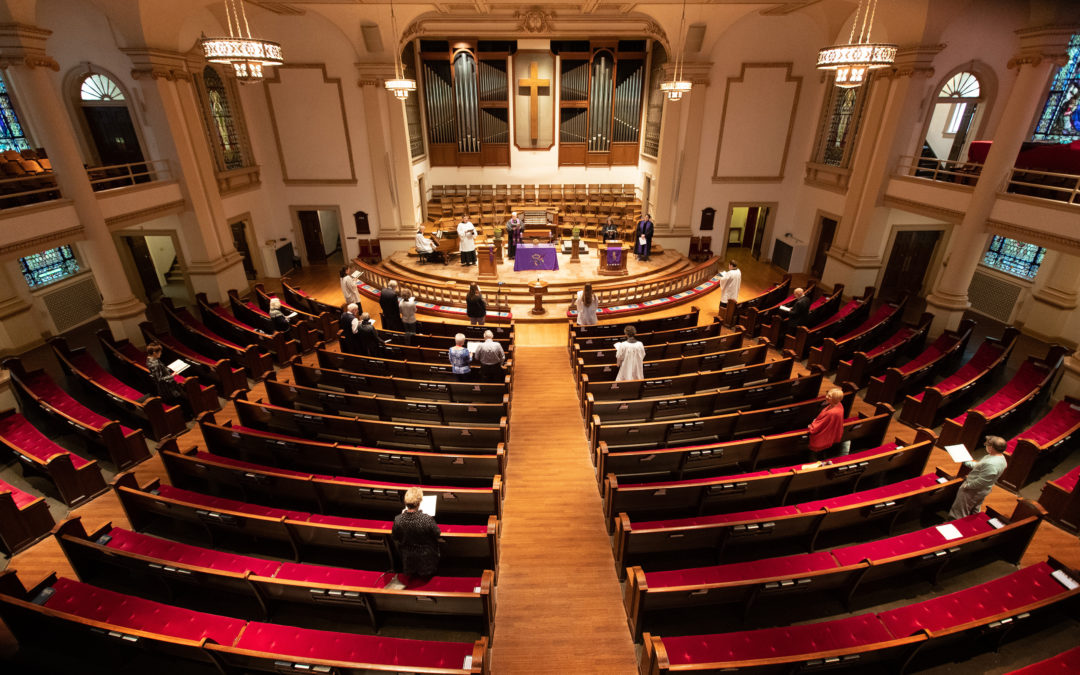
by Diane Randall, RNS | May 13, 2021 | Commentary, Headline News |
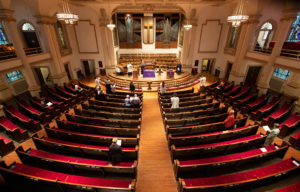
Members and leaders of Belmont United Methodist Church in Nashville, Tenn., worship in a mostly empty sanctuary Sunday, March 15, 2020, after church leadership encouraged people to worship from home via video livestream in response to the coronavirus. Photo by Mike DuBose, UM News
(RNS) — For communities of faith, COVID-19 has introduced new stress to the already demanding pastoral work of comforting the families and friends of those who have died and ministering from afar to those who are sick. While virtual worship turns out to be possible, it is a less than ideal way to make vital community connections.
But there is another immediate and concrete way that faith communities have been called to action during the pandemic: in feeding the hungry, supporting those who have lost their jobs, income or housing and offering emotional support to families who have increasing requirements as caregivers.
While faith communities often serve as first responders to the needs of people in their communities, it is simply impossible for houses of worship or social service agencies to shore up and sustain everyone in our communities. Our faith convinces us that we have a moral imperative to care for all of those left behind in this crisis. We need the support of our government, a government that works for all the people.
When Congress passed the American Rescue Plan in March, it dramatically shifted how the United States addresses the ravages of the pandemic and the ravages of poverty. Not only was there funding to support vaccine distribution, the legislation provided structural support for people who struggle to pay their monthly bills.
Two popular tax credit programs — the Earned Income Tax Credit and the Child Tax Credit — were expanded, allowing child poverty to be cut in half this year. Imagine what it means to moms and dads who can now afford food, diapers, clothing and utility bills and know they are no longer living on the edge of the chaos that comes from never having enough money.
Recently, Sen. Sherrod Brown of Ohio joined the Rev. Eugene Cho, president and CEO of Bread for the World, and me to discuss the dramatic impact of the American Rescue Plan in helping families who struggle to pay the rent and keep their families from the edge of destitution. As Brown said of his vote on the American Rescue Plan: “The best day of my career. Look what we did. Shots in people’s arms and money in people’s pockets. Kids back in school and people back in jobs.”
The job of addressing the pandemic and poverty is far from over. These effective tax credit programs will need to be made permanent in legislation that Congress will consider later this year. It’s a step that the interreligious faith community will be there to raise its voice for.
Churches will also continue to build trust with their members to become vaccinated. The president has encouraged faith leaders to help build confidence for everyone to get vaccinated, saying, “They’re going to listen to your words, more than they are me, as president of the United States. We need you to spread the word, let people in our communities and your community know how important (it) is to get everyone vaccinated when it’s their turn. … I think this is the godly thing to do. Protect your brother and sister.”
Just as communities of faith have been called on the last 13 months to respond to serve others — with emotional, material and advocacy support — we continue to be called on to support the common good to defeat the pandemic and to defeat poverty.
( Diane Randallis the general secretary of the Friends Committee on National Legislation, a national, nonpartisan Quaker lobby for peace, justice and the environment. The views expressed in this commentary do not necessarily reflect those of Religion News Service or UrbanFaith.)
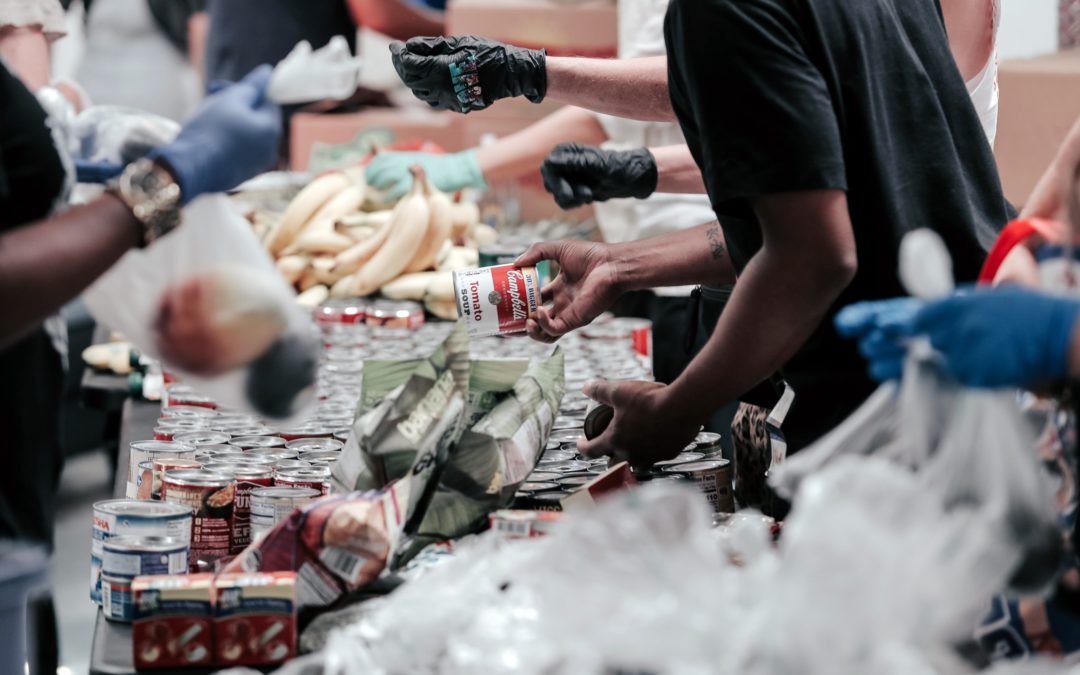
by Michael Wear, RNS | May 11, 2021 | Commentary, Headline News |
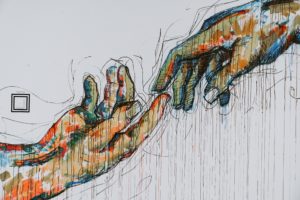 (RNS) — In a period of significant pressure on our democracy, our health and our overall well-being as a people, faith has provided a hidden infrastructure that has held America together. We miss out on much good when we do not recognize the role of faith and religious institutions in our communities.
(RNS) — In a period of significant pressure on our democracy, our health and our overall well-being as a people, faith has provided a hidden infrastructure that has held America together. We miss out on much good when we do not recognize the role of faith and religious institutions in our communities.
Last month, the Bridgespan Group released a report confirming what many of us already knew: While faith-inspired organizations, congregations and individuals make up a large percentage of America’s civic and social landscape — especially when it comes to providing aid to low-income people and those on the margins — they are significantly underrepresented and overlooked by philanthropic institutions who fund in these areas. Although faith is often in the headlines as a subject of political intrigue and a tool of partisan warfare, in the lives of millions of Americans, faith is felt closer to home, helping them to survive and make it week to week, day to day.
If you’re not familiar with the basic state of play, the findings of the Bridgespan Group might strike you as something more problematic than simply a missed opportunity. The report finds that “faith-inspired organizations account for 40 percent of social safety net spending across a sample of six cities, which vary in size and demographics. Yet, while some individual philanthropists and community foundations have recognized faith-inspired organizations as platforms for impact, that perspective has not translated into funding from the largest institutional philanthropies — particularly those seeking to address the effects of poverty and injustice.”
The report quotes Kashif Shaikh, co-founder and executive director of the Pillars Fund, a grantmaking organization that invests in American Muslim organizations, who rightly points out: “Secularism is the dominant narrative in the U.S., but often less so in vulnerable communities, in my experience. It’s a disservice to not even acknowledge it.”
Indeed, while it is certainly within the rights of philanthropic institutions to “not do religion,” such an approach undermines any meaningful, holistic commitment to community or place-based philanthropy in much of this country and in many places around the world. At best, a categorical rejection of religious engagement among institutions working in significantly religious communities amounts to an acknowledgment of an organizational deficiency. At worst, it adds up to a willful act of disruption and disrespect for the values, beliefs and culture of the communities that are “served.”
The problem is not just in philanthropy. In politics and public life, faith is often viewed as a sword or a shield for one’s own agenda. Religious communities are too rarely considered on their own terms, categorized instead as political foe or ally. This dynamic contributed to an unfortunate and harmful tenor of conflict between some governments and religious communities as we sought to mitigate COVID-19. These conflicts emerged, in part, because many elected officials viewed religious communities as a problem to solve rather than a potential partner. Politicians need to start viewing faith communities as not just sources of votes, but sources of wisdom and expertise.
Philanthropy for Active Civic Engagement (PACE) detected a lack of understanding for how faith and civic health are tied together, and in particular, how faith communities are helping people build relationships and work together across difference. In 2019, they launched a funding and learning initiative, Faith In/And Democracy, to support faith-inspired organizations and efforts that are helping to hold our communities and our democracy together.

As an adviser to this program, I have been able to see the tireless, often thankless, work grantees of the program have advanced. We set out to determine if there was a distinct field of faith organizations and actors supporting our civic life, and our efforts have been met with a resounding “yes.” In its pilot year, over 130 qualified organizations applied to the program, and five were selected to participate in a robust learning community that included a range of advisers as well as philanthropic leaders committed to this work. Together, we grappled with what COVID-19 might mean for our grantees’ work, and we saw up close how they discovered creative ways to persist in their mission despite numerous roadblocks. During an election year when some sought to stir up religious resentment and conflict, our grantees were working to strengthen our democracy and build bridges of faith between disparate communities.
Through the crises of this year and my experiences working in the White House under President Obama, I have come to rely on the fact that if there is a crisis or challenge in the news, there are people of faith at work to address it for the common good. Faith is always at work.
As we turn our focus from lockdowns to vaccinations, public officials are turning to religious communities for support. In recent weeks, Dr. Francis Collins and Dr. Anthony Fauci participated in a service with D.C.-area clergy focused on the vaccine. Dr. Fauci has referred to the imperative to get adults vaccinated as a “‘love thy neighbor’ opportunity.” After relative dormancy during the Trump years, President Biden has reestablished and reinvigorated the White House Office of Faith-based and Neighborhood Partnerships, which should ensure the federal government is able to effectively partner with the faith community to keep the national response to COVID-19 on track.
If respected, valued and included, people of faith and religious institutions can be partners on so many of the issues at the top of the national agenda. For example, the Biden administration should not merely welcome the support of people of faith for the anti-poverty provisions in the American Rescue Plan, but rather, invite faith leaders to champion the provisions, to claim them as a harbinger of a new national commitment to better care for the “least of these.”
Likewise, we cannot have a conversation about strengthening our democracy without recognizing the role of faith as a molder of civic character and a shaper of civic consciousness. Faith communities’ value to our democracy does not only show up for “Souls to the Polls,” but in the countless ways in which faith beckons Americans outside of themselves and toward their neighbors. In many communities, congregations serve as civic incubators, forums for strengthening muscles of service, negotiation and love.
Philanthropy, governments and other sectors should never instrumentalize faith, nor impose their values on faith communities. The point is not that faith communities should be viewed as potential avenues for advancing someone else’s agenda — rather, that so much of what we struggle to do and be is already attended to by the resources inherent in many religious communities.
Nothing does what faith does the way faith does it. We’re going to need it in the days ahead, just as it has been here — quietly, at times — all along.
(Michael Wear is founder of Public Square Strategies, LLC, and an adviser to PACE’s Faith In/And Democracy initiative. Heserved in the White House as part of President Barack Obama’s faith-based initiative. The views expressed in this commentary do not necessarily reflect those of Religion News Service.)











 (RNS) — In a period of significant pressure on our democracy, our health and our overall well-being as a people, faith has provided a hidden infrastructure that has held America together. We miss out on much good when we do not recognize the role of faith and religious institutions in our communities.
(RNS) — In a period of significant pressure on our democracy, our health and our overall well-being as a people, faith has provided a hidden infrastructure that has held America together. We miss out on much good when we do not recognize the role of faith and religious institutions in our communities.